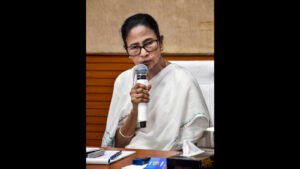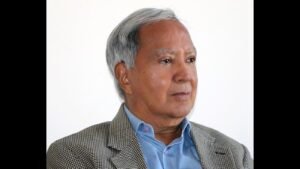
Several geopolitical events in the recent past point to a coalescence of anti-India hybrid threats that are gaining momentum independently. Before identifying these threats, it is essential to clarify the nature of contemporary hybrid conflict.

Hybrid threats (primarily non-State entities) attempt to gain an advantage over conventionally superior adversaries (normally nation-States) by targeting fault lines in multiple domains — diplomatic, informational, military, economic, political, financial, legal, and intelligence — and dissipating the State’s energies and attention before striking. Hybrid threats rarely succeed without ideological or extremist moorings and proxy support from another State with adversarial designs or from influential and disgruntled elements within the target State.
Several Army officers who have fought terrorists during the recent encounters in Jammu & Kashmir point to the latter’s increased willingness to engage Indian security forces with better weapons and improved tactical awareness. There is also a distinct possibility that well-trained Pakistan army personnel could be embedded in these infiltrating groups. Pointers from history suggest that whenever pathways for peace backed by electoral legitimacy have emerged in Jammu & Kashmir (J&K), Pakistan’s Deep State has stepped up attempts to stoke secessionism and communal disharmony through hybrid actors.
The recent provocative statements on Article 370 from Pakistan’s defense minister and the attempt by Pakistan Prime Minister Shahbaz Sharif to raise Kashmir at the UN General Assembly only validate this proposition. J&K chief minister Omar Abdullah is known for his flip-flop stance on the reasons for discontent in J&K. When in power in the past, he has squarely blamed Pakistan, and when out of power, he has blamed the party in power for poor governance. This time, he can work with New Delhi to counter any of Pakistan’s hybrid moves and emerge as a political leader of substance.
The security landscape in the fragile northeastern parts of India has worsened after the overthrow of the Awami League government in Bangladesh. The interim government is a mere stop-gap arrangement, and the effusive outreach by Pakistan is primarily to ensure that an anti-India government is in place sooner rather than later. With its organizational acumen and grassroots influence, the Jamaat-i-Islami Bangladesh — burnished by support from the Inter-Services Intelligence — appears ready to whip up anti-India sentiment in Bangladesh and keep the pot boiling in hot spots such as Manipur through support. to militant and terrorist groups.
In the absence of an elected government in Dhaka, the role of the Bangladesh armed forces in managing this emerging situation will be critical to regional stability. Adding to the Bangladesh conundrum, the ongoing civil war in Myanmar and the porous borders all around have the potential to derail the progress made in many northeastern states.
Many political leaders have become pawns in the hands of hybrid entities based overseas. Pro-Khalistan terrorists such as Gurpatwant Singh Pannun are emboldened by our political leaders’ irresponsible statements to the extent of filing a civil lawsuit in the United States against the government of India. Such actions constitute a hybrid security threat with moorings in the political domain.
There are no easy templates or preventive and proactive strategies to counter hybrid threats. India’s security forces have largely come to grips with the rapidly evolving nature of hybrid threats. However, there is an urgent need to adopt a bipartisan approach to national security. Political posturing, rhetoric, and opening old wounds will only impede national security. The need to build credible covert capability and erode the operational capability of hybrid actors on their home turf will be key to India signaling that it is no longer a soft state.
J&K now demands good governance even if the elected government does not agree with New Delhi on several issues. This will be critical to insulating the people from divisive actors who will test the resolve of the Indian State through limited hybrid action.
Governance must be accompanied by intelligence alertness and a willingness to militarily coerce and punish State and non-State actors who may feel emboldened by global events to disrupt the attempt to usher in peace after the assembly polls. Technology, precision capability, increasing use of Unmanned Aerial Systems and sophisticated employment of social media must be leveraged to disrupt and dominate the hybrid adversary.
The northeast demands deft handling of border management, dousing ethnic strife in Manipur, preventing a potential refugee crisis from the conflict in Myanmar, and restoring balance with Bangladesh without compromising on core security interests. All this while, India’s powerful northern neighbor will be watching carefully and assessing how an aspiring “power of consequence” is faring in complex and disruptive times.
Arjun Subramaniam is a military historian and a strategic commentator. The views expressed are personal




